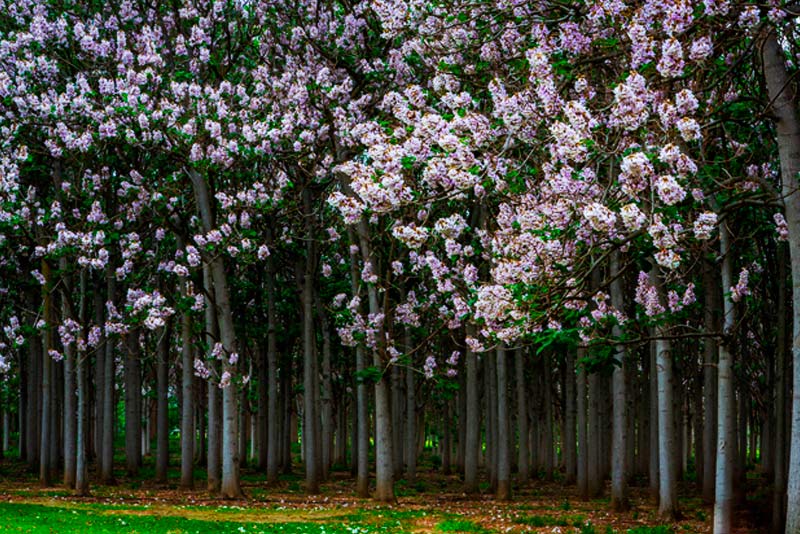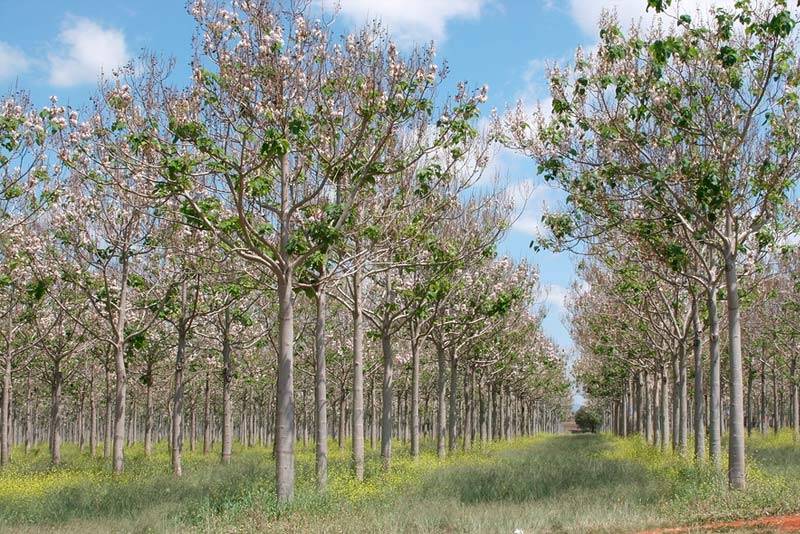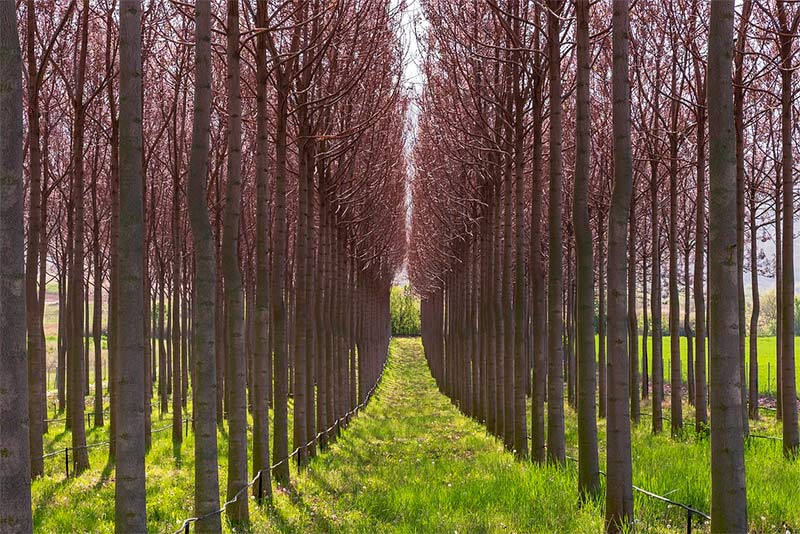Conditions pour une croissance optimale de Paulownia
As mentioned elsewhere on our site, Paulownia is a tree that adapts easily to a wide variety of soil and climatic conditions. However, this adaptability should not lead to misjudgment when deciding to establish a commercial plantation.
While, on the one hand, there are indeed paulownias that grow in very hot or very cold regions and in soils that can be very sandy or clayey, this should not lead an investor to assume that in any climate and in any soil, a paulownia plantation can grow in conditions that provide adequate growth rates, wood quality and profitability.
Therefore, we summarize below the optimal conditions for planting and those in which it is not advisable to start growing paulownia commercially.
Factors to consider:
-
Temperature regime - some Paulownia hybrids can survive temperatures ranging from -30 to +45 degrees Celsius, but keep in mind that at temperatures well below 0 for extended periods, although the plant will not die, if it does not reach a certain degree of woodiness on the trunk, it may burn, causing a technical cut at the base in late winter. As for very high temperatures, even in these cases, the plant survives, but its growth is delayed during warmer periods.
- PH - As far as PH is concerned, Paulownia grows in good conditions between 5.5 and 8.
- Salinity - the degree of salinity must be less than 1%.
- Porosity - Soils with a porosity of less than 50% should be avoided.
- Soil structure - Paulowia grows very quickly in light, well-drained soils, ideally with low clay content (no more than 20-25%) and good sand content. The plant suffers from water stagnation in the root system, so it is important that the soil is well drained, given its high water requirements. For this reason, soils containing gravel or small to medium-sized stones are also suitable.
- Soil
depth - Given the root system that the plant develops, it is
important that the soil is deep and that there are no aquifers or
rocky banks in at least the first three meters of
depth.
- Wetlands and stagnant water - As mentioned above, paulownia suffers from stagnant water and a high degree of salinity. Therefore, swampy soils and brackish water should be avoided.

- Windy areas - Paulownia suffers from high winds, so areas with wind speeds exceeding 50 km/h are not recommended. In case of frequent winds above 30 km/h, the use of bracing may be recommended until the trunk is sufficiently wooded.

- Precipitation and water supply - The characteristics of paulownia, as already mentioned, are a developed root system and the size of the leaves; it is the large leaves, if, on the one hand, they favor a very rapid growth of the plant through photosynthesis, on the other hand, they cause high levels of evapotranspiration (understood as the amount of water released that needs to be recovered), obviously higher in the hot seasons. In the Ukrainian latitudes, the warm seasons have always been characterized by low precipitation and, therefore, a water supply through irrigation systems is necessary to achieve adequate growth levels.

- Fertilizers - In order for the plants to grow quickly and produce good quality wood, it will be important to make the necessary annual fertilizer inputs, which can be chemical or organic. A chemical and physical analysis of the soil should be studied to establish an adequate fertilization program. As mentioned earlier, biochar produced from branches of the same plantation could be used for organic fertilization of the plants, which would considerably reduce the amount of other fertilizers.

- Light - Light is a fundamental element for the growth of paulownia, a plant that loves the sun and needs it for very rapid growth. To this end, it is important to assess the total number of hours of light in the planting area as well as an appropriate planting pattern to ensure that the plants are not too close together to shade each other, which significantly slows down the growth rate of the trees within the planting.



